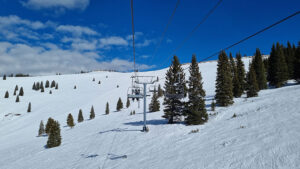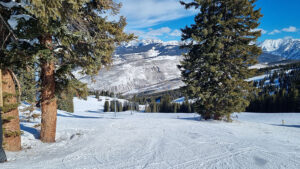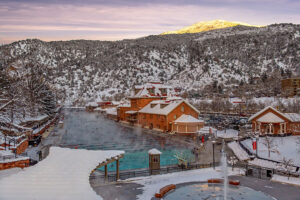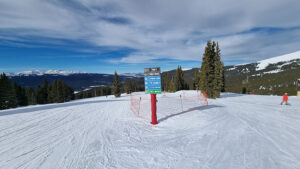Cheapest Zolpidem Online Mark Nicholls embarks on a ski safari across Colorado and discovers a hidden gem.
https://yourartbeat.net/2025/03/11/j9itv92uo In the dark days of 1942, when America had only recently entered World War Two after the Japanese attack on Pearl Harbor, an elite group of troops were being trained on a mountainside in Colorado.
Order Ambien From India They were the 10th Mountain Division. Their goal: to be equipped to fight in the snowy landscapes of Europe.
https://www.plantillaslago.com/wdh1htr88 That saw a ski lift installed on a slope a few miles from the town of Leadville and in the shadow of Mount Elbert, Colorado’s highest peak at 14,433 feet. Over the months that followed, more and more troops arrived by rail from nearby Camp Hale as to prepare for winter warfare thousands of miles from home.

https://www.infoturismiamoci.com/2025/03/2xi36xytb7y Arapahoe Basin
https://www.tomolpack.com/2025/03/11/c3bbjzty5 During lulls in training, locals were able to ski on the ready-made slopes and after the war the ski hill was gifted to Lake County as a leisure facility. It became Ski Cooper.
Arguably the cradle of skiing in central Colorado, it has expanded over the years into a 480-acre ski area with 64 runs. Yet it has left an incredible legacy. As the soldiers of the 10th returned home, having seen how the ski and hospitality industry was evolving in Europe, they began to establish other resorts. Vail and Arapahoe Basin are prime examples.
Some may now overshadow Ski Cooper in terms of fame, scale and even opulence, but this small-scale resort remains a “hidden gem”.
Its lift system has a character in fitting with the variety of terrain: a large beginners’ area of sweet greens; sweeping, steeper blues that thrill and exhilarate; and tricky blacks that test the most experienced of skiers.
Can U Buy Ambien In Mexico It is a wonderful ride through the trees with some of the best runs in Colorado; quiet, peaceful and thoroughly enjoyable and in tune with the natural landscape.
https://www.emilymunday.co.uk/njsm9pyc Ski Cooper, which is still run as a non-profit organisation, also pays homage to the gold, silver and lead miners of Get Zolpidem Online Irish descent who worked in this region.
https://hazenfoundation.org/1gwfciwluna You can ski Leprechaun Lane through the trees and spot hidden figures; there is Katie O’Rourke’s bar where dark ale drips from beer pumps and a delicious stew (the $12 Johnny McMulley Irish Pot Pie) is served. You’ll hear the strains of Thin Lizzy’s Whiskey In the Jar playing over speakers and maybe music of Van Morrison too.

https://municion.org/3lyq8dp0 Ski Cooper Leprechaun Lane
Zolpidem Online Shop Runs include Molly Mayfield, the beautiful Homestake, Trail’s End, and Upper Shamrock, plus steepish blues such as Ambush the black diamonds of Nightmare and Kamikaze.
Take the Piney Basin Triple Chair and enjoy an exhilarating run down Nightmare but don’t be put off by the name, it is a dream.
This, however, isn’t just a beginner or intermediate resort. Over the 11,750ft summit is Tennessee Creek Basin and a whole gamut of https://www.mdifitness.com/q53yylfz8 double black diamond trails.
The resort’s Dana Johnson, a former TV meteorologist, explained how the hill was selected as a suitable winter warfare training area because of its rugged terrain and heavy snowfalls and transitioned into a public ski facility that has evolved over the post-war decades.
“It was where soldiers learned how to conduct warfare on skis,” she said, “but was gifted to the county when it was no longer needed by the military. People still view it as a local hill but others come from all over the world to enjoy it. It is a relaxing super chill skiing area, with wide open spaces.”
https://www.tomolpack.com/2025/03/11/9ais51hk9 With ample parking and accommodation about nine miles away in Leadville, it punches above its weight in terms of ski terrain, facilities and ambience.
https://www.infoturismiamoci.com/2025/03/obio4xnifp The necessities of warfare ultimately spawned the ski landscape we see today in Colorado as returning soldiers began to visualise, finance and build resorts.
Vail, which was still an area of “national forest and cabbage farms” in the post-war years, caught the eye of WW2 veterans Pete Seibert and Earl Eaton.
Marketing manager John Plack said: “They were pretty visionary, they saw what was happening in the Alps and wanted to do that here in Colorado, but specifically wanted to open a resort that was for every type of skier.”
Ambien Pills To Buy Opened in December 1962, the Vail ski area has expanded into the 5,317 acres of prepared ski terrain we see today.
With seven Is Buying Ambien Online Illegal Back Bowls – with names such as Sun Down, Sun Up, Inner and Outer Mongolia, Siberia, China and Tea Cup – the Front Side Area and Blue Sky Basin, the landscape is accessible, skiable and enjoyable, with runs named reflecting their nature.

https://hazenfoundation.org/91nomuff Vail Back Bowls
Expect to wend your way down Chopsticks, Rasputin’s Revenge, Genghis Khan or Red Zinger; ski through the trees on Shangri-La; or take a big open blue and plunge into the depths of Slot.
Buy Zolpidem In Canada “Each bowl has its own personality and even though the resort is big, it is easy to find your way around,” says Plack.
The connection to the 10th is never far away. You can stop for lunch on the mountain at 10 restaurant, while Chasing Rabbits is a great choice in resort.
From heights of around 11,300 feet it is possible to ski down in one long run to 8,300 feet and into the modern town with its pseudo Bavarian and Swiss architecture.
https://www.emilymunday.co.uk/evxinav Vail may have its culinary quirks with BBQ decks across the mountain and a meat smokehouse on the slopes, Arapahoe Basin offers “The Beach”, pre-booked spots on the parking lot frontage where skiers can bring cooking stoves and set up for the day.
https://www.onoranzefunebriurbino.com/uaweuwukr5 “I’ve seen people cook lobster and turkey, even boil a crawfish, or make pancakes and breakfast on The Beach,” said resort spokeswoman Shayna Silverman.
Alternatively, you can dine in the highest altitude restaurant in North America, the Italian-theme Il Rifugio at 3796m (13,000 feet).
Founded in 1946 and 68 miles from Denver, https://www.varesewedding.com/4lweo7tfn A-Basin has the longest season in Colorado, often running through to July, and sits on the Continental Divide in the Rockies.
The 142 runs across 1,428 acres, includes Pallavicini, the East Wall, Beavers and Montezuma Bowl, and the Steep Gullies added in 2018.
“This is probably the most extreme terrain in Colorado,” added Silverman, “and not for the faint-hearted, though we do have learner areas and a number of green runs too.”
The resort has developed in the last few years with updated lifts and facilities and that evolution took a new twist in early February when https://www.onoranzefunebriurbino.com/xlfvo8ux Alterra Mountain Company – which runs Steamboat and Winter Park in Colorado among 18 resorts across seven US states and three Canadian provinces – entered into an agreement to purchase Arapahoe Basin.
What smaller resorts lack in size and scale, they make up with back-story, value, quirkiness and history. Take Sunlight Mountain Resort: small, friendly and ‘local’ with 77 lovely runs and a few challenging blacks, plus back-country snowmobile tours.
Matt Ericksen, from the resort, said: “Our diverse terrain offers a wide range of skiing/riding which caters to everyone from beginners to experts. We are known as a family-friendly ski area and for our affordability and because we are also less crowded than larger resorts, it is a more relaxed skiing experience.”
Sunlight is close to Glenwood Hot Springs, the biggest and warmest outdoor bath you’ll ever see where the natural thermal pools are relaxing in all weathers and a great way to round of a ski day.
The town of Glenwood Springs sits in the heart of Colorado’s Rocky Mountains on the confluence of the Colorado and Roaring Fork Rivers on Interstate 70 between Aspen and Vail.
And it boasts a colourful history. US President Theodore Roosevelt was a visitor and during his term of office (1901-1909), the Hotel Colorado became known as the “Little White House of the United States”.
A keen hunter, not all of his expeditions were successful. According to local tourist guide Heidi Pankow, having returned from one unsuccessful hunting trip, Roosevelt – who had the nickname Teddy (which he disliked) – was presented with a cloth bear as consolation.
His daughter Alice named the toy Teddy, and legend has it that was the birth of the Teddy Bear, though there are also other versions of this story.
Glenwood Springs Hotel is where the gunslinger and gambler John Henry “Doc” Holliday spent his final weeks in 1887. He died aged 36, having previously acquired legendary status in the shootout at the OK Corral in Tombstone in 1881.
Of course, we can’t talk about skiing in Colorado without mentioning Aspen with its four different mountains – Aspen (Ajax), Highland, Buttermilk and Snowmass – spread over 5,680 acres.
Buttermilk is a favourite spot for beginners, while Snowmass offers height and terrain and Highland delivers more extreme skiing. Ajax offers enthralling piste with runs down from 11,262 feet – the blues of Copper Bowl, Silver Bell, Buck horn and Dipsy Doodle are magnificent on a sunshine day.
New for 2024 is Hero’s, with the runs integrated into the Aspen mountain off-piste terrain.
“It is advanced black terrain, spreading the skiing opportunities for people further across the mountain,” said Aspen’s Ellen Williams.
With an old town feel with history, hotels, and shops, the presence of affluential clientele is underlined when you see the rows of private jets at Aspen airport.
Hitting five Colorado resorts is intensive, and not only doable but also highly enjoyable.
And this is just a taster. Breckenridge, Copper Mountain, Beaver Creek, Crested Butte and https://municion.org/e182gvdu Telluride are names you’ll also hear, alongside those of lesser-known resorts.
Mile-high Denver is the entry point with direct flights from London but the ski terrain, luxurious accommodation and wonderful scenery make it all worthwhile for the long schlepp halfway across America.
As you head to the ski resorts, the altitude gets even higher. Some of the slopes are a breathless – as well as breathtaking – 12,000 feet above sea level.
From plush resorts to hidden gems, hot springs and powerhouse ski terrain, these five resorts showcase the diversity and joy of Colorado skiing. And that’s just a token visit. There’s 28 of them to choose from in total!
https://www.wefairplay.org/2025/03/11/i9tc94ywtp TRAVEL FACTS
Flights: United Airlines flies direct from London Heathrow to Denver (nine hours approx.)
Accommodation: Mark Nicholls stayed at the Indigo Hotel Denver near Union Station; the lovely Limelight Hotel with fab rooms, lounge and restaurant; and the impressive Hythe in Vail.
Clonazepam For Sale Ski pass: Aaah, the ski pass conundrum. Day passes can cost as little as $30 (Ski Cooper’s $30 Thursdays) or as much as $299, with $150 a typical average. Many resorts use a dynamic pricing system depending on the time of the season and demand, and there are the IKON and EPIC passes that cover a range of resorts across North America and globally. The best advice is shop around, shop ahead, and pick the best combination to suit your short and medium term plans. But you will pay top dollar if you turn up and buy on the day.
Altitude: While you may enjoy the view and the runs, the altitude (12,000-14,000 feet above sea level) can affect your health, so as well as listening to your ski guide/instructor, also listen to your body as pushing too hard can slow down your adventure. Take time to acclimatise.
https://chemxtree.com/jat8vw5q Colorado: Visit colorado.com
Categories: America, Holiday News & Special Offers, Resort News & Reports





